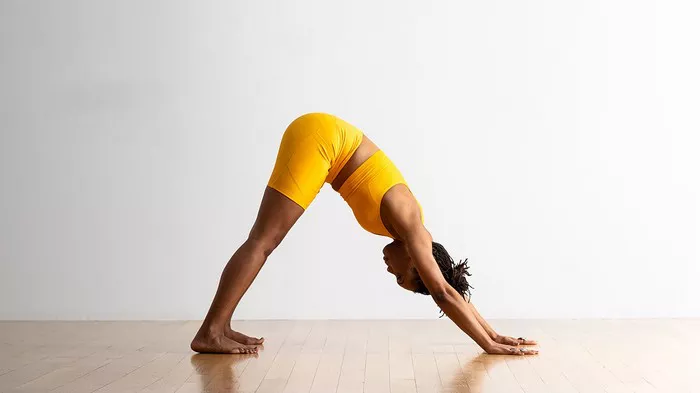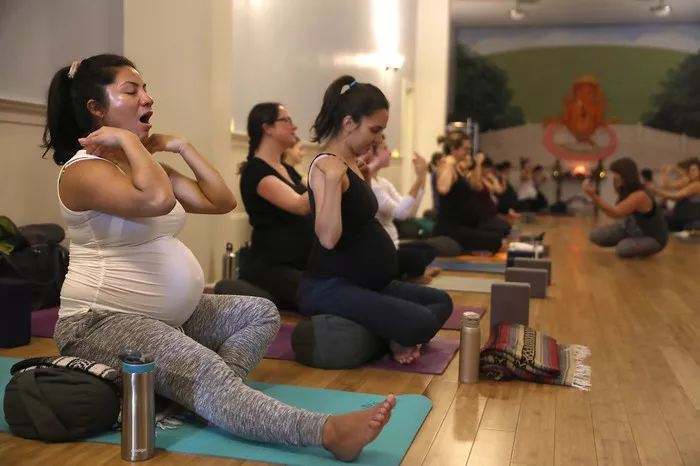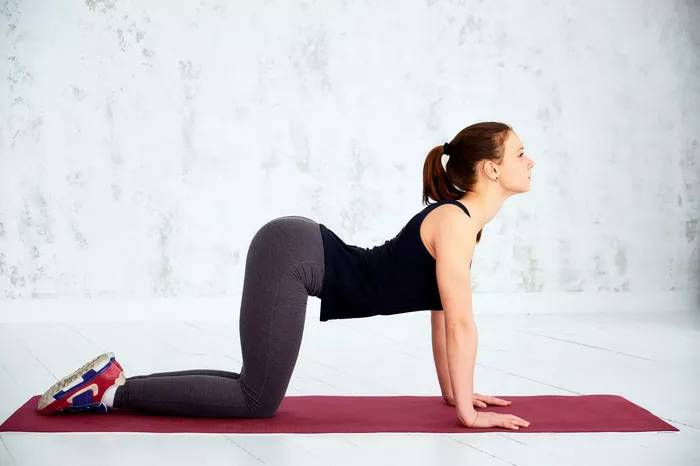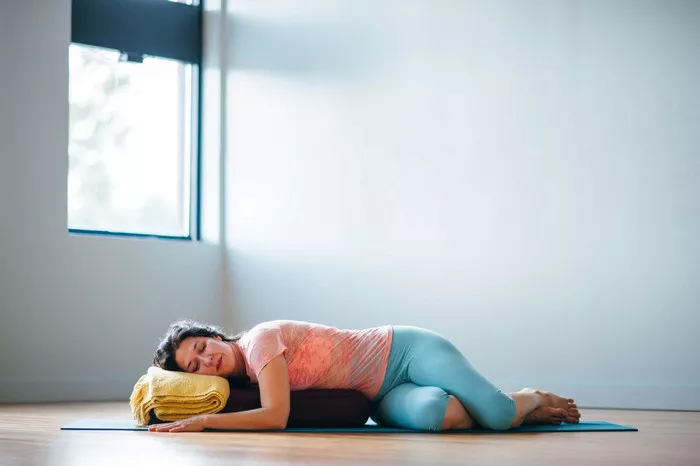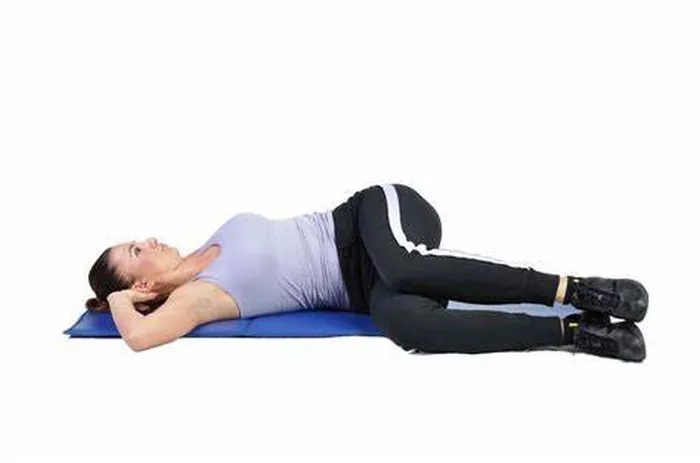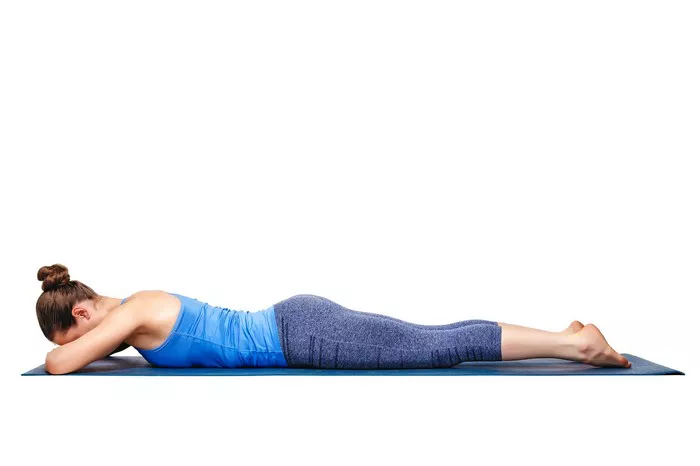Yoga has long been recognized for its ability to foster both physical and mental well-being. Over time, various styles have emerged, each targeting different aspects of health, from building strength to improving flexibility, and even calming the mind. Among these, Yoga Nidra and Restorative Yoga are two practices that stand out for their ability to promote deep relaxation and stress reduction. While they share similarities, such as their emphasis on deep rest and mental tranquility, they are distinct in their approach and benefits. In this article, we will explore the differences between Yoga Nidra and Restorative Yoga, their individual purposes, and how each practice can support overall health and wellness.
Understanding Yoga Nidra
Yoga Nidra, often referred to as “yogic sleep,” is a state of conscious relaxation that guides practitioners through a journey of profound rest. Unlike regular sleep, in which the mind enters unconsciousness, Yoga Nidra involves a heightened sense of awareness, even during deep relaxation. The practice is often led by a teacher or recorded audio that takes the practitioner through a series of stages, including body scanning, breath awareness, visualization, and sometimes affirmations or intentions (called Sankalpa).
Key Characteristics of Yoga Nidra:
State of Consciousness: The practitioner lies down in a comfortable position and moves through various stages of relaxation. While the body rests, the mind remains aware, helping to activate the parasympathetic nervous system (the “rest and digest” system).
Stages of Practice: Yoga Nidra typically follows a systematic approach that includes body scanning, breath awareness, visualizations, and sometimes a Sankalpa (a positive affirmation or intention for the practitioner to focus on).
Deep Relaxation: The primary aim of Yoga Nidra is to induce a state of deep rest, often resulting in profound physical and mental relaxation. Studies show that Yoga Nidra can reduce stress, promote healing, and even support better sleep.
Psychological Benefits: Yoga Nidra is not just about physical relaxation; it also helps to release emotional tension. By accessing the subconscious mind, it can support emotional healing, reduce anxiety, and even increase self-awareness.
The Benefits of Yoga Nidra:
Promotes Deep Relaxation: One of the primary benefits of Yoga Nidra is its ability to induce a state of relaxation that is even deeper than that achieved through regular sleep.
Reduces Stress and Anxiety: By calming the mind and relaxing the body, Yoga Nidra helps reduce stress, lower blood pressure, and alleviate symptoms of anxiety.
Improves Sleep: Many people report improved quality of sleep after practicing Yoga Nidra regularly, as it helps retrain the body and mind to access deep relaxation.
Enhances Creativity and Clarity: Through the meditative aspect of Yoga Nidra, practitioners may experience enhanced clarity, creative insight, and a deeper sense of intuition.
Physical Healing: As a deeply restorative practice, Yoga Nidra can help facilitate healing from physical injuries, chronic pain, and tension by allowing the body to enter a deeply restful state.
Understanding Restorative Yoga
Restorative Yoga, on the other hand, is a gentle, therapeutic practice focused on supporting the body’s natural healing process. In Restorative Yoga, the emphasis is on passive poses that require minimal muscular effort. The use of props such as bolsters, blankets, blocks, and straps helps support the body in each pose, allowing the practitioner to remain in these restful positions for extended periods, often anywhere from 5 to 20 minutes.
Key Characteristics of Restorative Yoga:
Physical Support: Restorative Yoga relies heavily on the use of props to support the body in each posture, allowing for deep relaxation and muscle release. The poses are held for longer periods of time, which helps activate the parasympathetic nervous system and promotes relaxation.
Gentle Movement: While Yoga Nidra is a purely meditative practice, Restorative Yoga involves slow, gentle movements and passive postures that promote healing. It’s more about passive stretching and resting than actively engaging muscles.
Focus on Relaxation: Restorative Yoga aims to help the body release deep-seated tension and trauma by encouraging the relaxation of both the mind and body. The long-held postures allow the practitioner to deeply unwind and restore.
Therapeutic Benefits: Many people use Restorative Yoga as a form of rehabilitation or injury recovery, as the practice aids in muscle relaxation, reduces pain, and promotes flexibility.
The Benefits of Restorative Yoga:
Reduces Stress and Tension: Restorative Yoga activates the body’s relaxation response, reducing the levels of cortisol (the stress hormone) and helping practitioners feel calm and centered.
Increases Flexibility: The prolonged nature of the poses helps improve flexibility and release muscular tension, especially in areas like the hips, shoulders, and lower back.
Improves Posture: The deep relaxation and slow stretching inherent in Restorative Yoga can help realign the body, improving posture and alignment over time.
Supports Injury Recovery: Restorative Yoga is often used as a therapeutic tool for those recovering from injury or dealing with chronic pain, as it allows the body to rest and heal without strain.
Mental Clarity and Relaxation: Like Yoga Nidra, Restorative Yoga promotes mental relaxation and clarity. The practice is often recommended for those experiencing burnout or exhaustion, as it helps replenish the nervous system.
Comparing Yoga Nidra and Restorative Yoga
While both Yoga Nidra and Restorative Yoga are designed to promote deep relaxation, they differ significantly in their approach and techniques. Here’s a breakdown of how they compare:
1. Purpose and Focus:
Yoga Nidra: The primary aim of Yoga Nidra is to achieve a state of deep, conscious relaxation. It is more of a meditative practice that guides the practitioner into a state of awareness while the body rests. The focus is on relaxation, mental clarity, emotional healing, and self-awareness.
Restorative Yoga: Restorative Yoga focuses on physical relaxation through passive postures. It helps the body release tension, improve flexibility, and recover from physical strain or injury. While it also provides mental relaxation, its emphasis is on the physical body and its therapeutic benefits.
2. Physical Posture:
Yoga Nidra: Practitioners are typically lying on their backs in a comfortable position, often with their arms and legs spread out. There is no movement or physical exertion in Yoga Nidra; it is purely about resting the body while remaining mentally engaged.
Restorative Yoga: Restorative Yoga involves a series of passive postures, often lying or sitting in supported poses, using props to ensure comfort and allow the body to fully relax. There is minimal movement, and poses are held for long periods to allow deep relaxation to occur.
3. Mental Engagement:
Yoga Nidra: Mental engagement in Yoga Nidra is high, as the practice is designed to guide the mind through various stages of relaxation, including body scanning, breath awareness, and visualization. It helps the practitioner connect with their subconscious mind, making it a deeply introspective experience.
Restorative Yoga: In Restorative Yoga, the focus is more on physical relaxation, and the mind is invited to relax as well. While it can be a meditative practice, it does not involve the same level of conscious mental engagement as Yoga Nidra. The practitioner is invited to be present with the body and let go of mental tension, but it’s a more passive form of meditation.
4. Duration and Frequency:
Yoga Nidra: A typical session of Yoga Nidra lasts around 30 to 40 minutes, although it can be longer or shorter depending on the teacher’s guidance. It can be practiced once or twice a week or even daily, especially for those seeking profound relaxation or emotional healing.
Restorative Yoga: Restorative Yoga sessions typically last 60 to 90 minutes, with each posture being held for 5 to 20 minutes. It can be practiced as often as needed to promote relaxation, healing, and recovery from physical exertion.
5. Target Audience:
Yoga Nidra: Yoga Nidra is ideal for individuals seeking mental rest, emotional healing, or deep relaxation. It is also a great practice for those dealing with insomnia, anxiety, or stress-related conditions.
Restorative Yoga: Restorative Yoga is ideal for individuals looking to recover from physical strain, chronic pain, or stress. It is also beneficial for athletes, people with injuries, or those seeking to increase flexibility and promote overall physical relaxation.
Conclusion
Both Yoga Nidra and Restorative Yoga are incredibly effective for promoting relaxation, reducing stress, and supporting overall well-being. However, the choice between the two largely depends on your personal goals and needs.
If you’re looking for a practice that will help you relax and rest deeply, Yoga Nidra may be the right choice for you. On the other hand, if your goal is to restore your body, release tension, and heal physically, Restorative Yoga may be the better option.
Ultimately, both practices are complementary and can be incorporated into a regular yoga routine for a holistic approach to relaxation and healing. By exploring both practices, you can discover which works best for your body and mind, and tailor your practice to fit your unique needs.
Related Topics:

